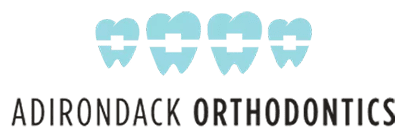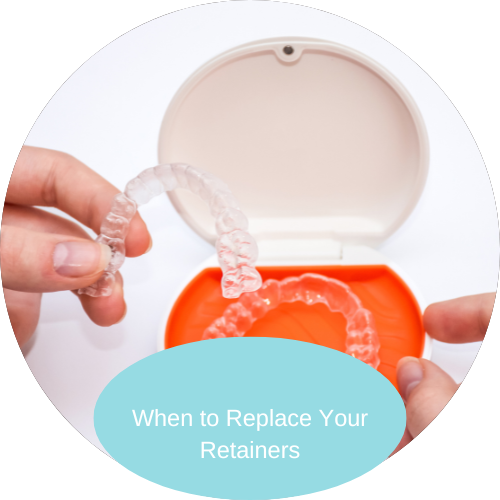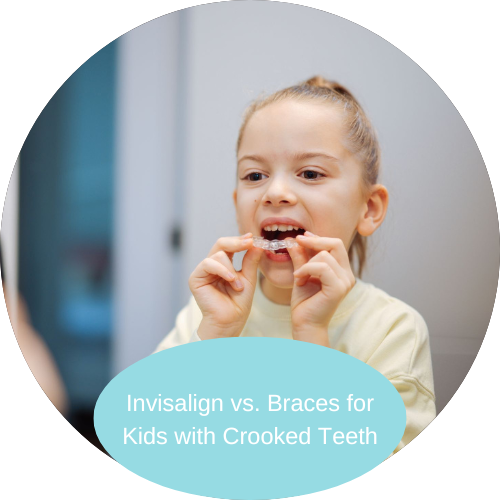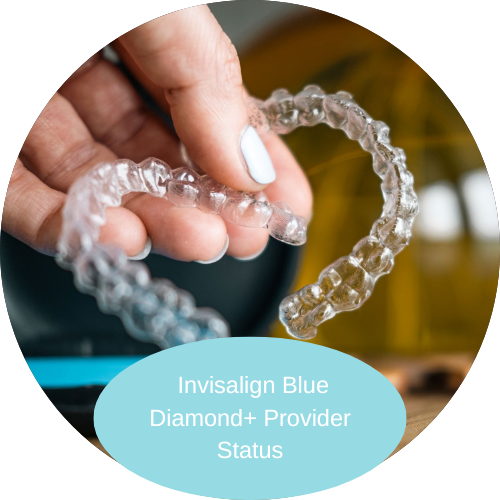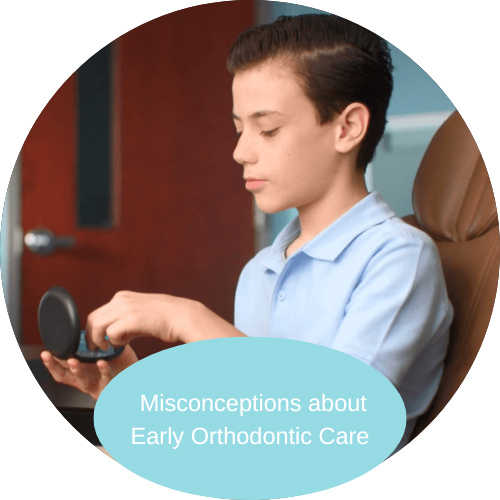Get Started
Contact Us
There’s no shortage of orthodontists in Greenbush, but finding one that fits what your family actually needs? That’s why so many locals choose Adirondack Orthodontics. Thanks to Dr. Berenshteyn, Dr. Sanacore, Dr. Taylor, and Dr. Ha, our team brings together trusted care, real results, and a better experience for every patient. Here’s what makes our East Greenbush office a local favorite for orthodontic care that actually works.
Orthodontics Built for Real Life
If your week is packed with school runs, work meetings, sports gear in the trunk, and maybe a snack run squeezed in somewhere, you’re not the only one! That’s exactly why our East Greenbush office is built to keep things simple and on schedule.
Early appointments before school? Later on, after practice? We’ll help make it happen. Our team stays on time, check-ins are quick, and we keep communication clear so you’re never left guessing.
Orthodontic care shouldn’t feel like one more thing to juggle. Around here, it fits into your day without flipping it upside down.
Next, let’s take a look at the treatment options that keep things flexible for families on the go.
Care That Keeps Your Wallet Happy
One of the first things we hear from families is, “Can we afford this?” It’s a fair question, and one we’re happy to help you answer! From your very first consultation, the Adirondack Orthodontics team keeps costs transparent and flexible so you’re never left wondering what’s coming next.
We work with most major insurance providers and handle the paperwork so you don’t have to. Have an FSA or HSA? You can use that here, too! If you’re looking for more flexibility, we offer:
- Monthly payment plans that fit your family’s budget
- CareCredit financing with options for no interest
- Discounts for teachers, military families, and multiple patients in treatment
Next, let’s check out the treatment options that keep things moving for kids, teens, and adults alike.
Greenbush’s Favorite Treatments
Every smile starts in a different place, and at Adirondack Orthodontics, we’re here to meet you there. Dr. Berenshteyn, Dr. Sanacore, Dr. Taylor, and Dr. Ha help kids, teens, and adults choose treatments that feel realistic, not rigid.
Braces Without the Bulk
Braces are still one of the most effective ways to move teeth, and they’ve come a long way! We offer both traditional metal braces and low-profile clear ceramic options, so patients can choose what feels right for them.
Ceramic braces blend in with your natural tooth color, while metal braces offer colorful bands that let kids and teens add a little personality. Both options are smaller, smoother, and more comfortable than they used to be.
Invisalign That Fits Busy Lives
We’re proud to be a Blue Diamond+ Invisalign provider, which puts Adirondack Orthodontics in the top 1% in North America. These clear aligners are a hit with teens and adults who want something that keeps a low profile while still delivering results.
Starting Early, Staying Ahead
For younger kids, phase one treatment can help set the stage before all their adult teeth come in. It’s a smart way to keep future care simpler.
Retainers That Don’t Catch You Off Guard
Our Smile Protection Program keeps retainer replacements affordable for the long haul—because life happens, and we plan for that.
Next up, let’s look at how our tech makes things faster, cleaner, and way more comfortable.

Tech That Speeds Things Up (Without the Mess)
Gone are the days of biting into a tray of goop and hoping it works on the first try. At Adirondack Orthodontics, we use 3D iTero scanning to get a full picture of your smile. Fast, clean, and way more accurate!
It only takes a few minutes, and most patients are surprised by how easy it is. Even better? You’ll get to preview what your teeth could look like after treatment right on the screen.
Digital scans help us plan more precisely and keep your visits on track. It’s one of those tools you didn’t know you’d love until you experience it.
Next, let’s take a look at how our East Greenbush team stays connected to the community outside the office.
Part of the Greenbush Community, In and Out of the Office
Orthodontic care is just part of what we do. The team at Adirondack Orthodontics believes in showing up for the people we serve, not just during appointments but throughout the year. Whether it’s a school event, a local fundraiser, or supporting families who need a little extra help, you’ll find us there.
Here’s a look at some of the ways we give back:
- Partnering with Things of My Very Own to donate dental kits, warm winter gear, and other essentials for children in crisis
- Supporting local schools through sponsorships and supply drives
- Cheering on youth sports teams and contributing to neighborhood events
Dr. Berenshteyn, Dr. Sanacore, Dr. Taylor, and Dr. Ha are proud to be part of the East Greenbush community—and even prouder to support the families who trust them with their care.
Let’s wrap things up with why so many local families choose us and keep coming back.
What Keeps Families Coming Back
It’s more than just the exceptional results that Greenbush patients love. It’s the way the team makes the process feel a little easier every step of the way. We’ve built a reputation for care that just clicks with families all over the community.
Dr. Berenshteyn, Dr. Sanacore, Dr. Taylor, and Dr. Ha bring consistency, patience, and a real knack for making kids and parents feel at ease. This is the office that families mention in carpools and group chats. The one that gets orthodontic care right without overcomplicating it!

Greenbush Knows a Good Thing When They See It!
From the warm welcome at the front desk to the easy checkouts and smooth visits, Adirondack Orthodontics hits all the right notes. Dr. Berenshteyn, Dr. Sanacore, Dr. Taylor, and Dr. Ha bring the kind of care that sticks with you. Parents talk, teens tell their friends, and before long, the whole neighborhood’s in the loop. Book your free consultation today at one of our offices throughout the Capital Region, including Albany, Glens Falls, Clifton Park, Latham, East Greenbush, and Schenectady for orthodontic care that finally fits your schedule and your style!
Use this helpful checklist to plan ahead!
Starting your child’s orthodontic journey is a significant step, and the first visit often sets the tone for what they can expect during the rest of their experience. To make this process smooth and anxiety-free, preparation is key! Use this handy checklist to ensure a successful first orthodontic visit.
Explain the Purpose of the Visit
Talk to your child about why they’re visiting us. Explain that an orthodontist will check their teeth and create a plan to improve their smile.
Schedule at a Comfortable Time
Choose a time when your child feels their best (e.g., mornings if they’re more focused and calm). Allow enough time afterward for rest or relaxation.
Prepare Their Questions or Concerns
Ask if they have any questions or worries about the visit. Making a list beforehand may help your child feel more comfortable. Our team is here to answer any questions they or you may have.
Practice Good Oral Hygiene
Have your child brush and floss thoroughly before the appointment.
Bring Necessary Documentation
Gather any referral letters, X-rays, or dental history records. Prepare insurance information if applicable.
Share Their Medical/Dental History
Inform us about any health conditions, allergies, or past dental experiences to ensure personalized care.
Plan Snacks or Rewards Post-Visit
A favorite snack after the appointment can make the experience more enjoyable. Celebrate their first visit with small rewards, such as praise or a fun activity!
Bring Comfort Items for Nervous Kids
Allow your child to bring a favorite toy, blanket, or book to help them relax in the waiting room.
Encourage an Open-Minded Attitude
Let them know this is just the beginning of a journey to make their smile amazing. Keep the excitement alive by talking about the end goal—a healthy and beautiful smile!
Final Thoughts
We are here to ensure your child feels at ease throughout their orthodontic journey. Their first visit isn’t just about assessment—it’s about building trust, confidence, and excitement for the road ahead.
Follow this checklist to create a positive orthodontic experience for your child. We look forward to welcoming you at Adirondack Orthodontics and starting this exciting journey to a healthier smile!
Learn about the importance of retainer use and replacement here
A retainer helps you maintain the straight, healthy smile you’ve worked so hard for. But, just like your aligners, your retainer should be cared for properly to ensure maximum efficiency. With proper care, retainers should serve you well for about 18 months. Then it’s time for a replacement.
Keep reading this blog post to get a better idea of when to replace your retainer and how to make the process as easy as possible with help from Adirondack Orthodontics.
Why should I wear my retainer?
Following our instructions for wearing your retainer will help you maintain the position of your teeth. If you don’t, you may need to get new scans for a replacement retainer (which involves a rescan fee). Adhere to the proper protocol for your retainer, and replacement retainers can be shipped directly to your home, no office visit required!
What should I do if my retainer cracks?
A cracked retainer is one circumstance that will require replacement before the 18 months is up. Cracked retainers are dangerous and ineffective, potentially causing damage to your mouth, gums, and teeth. If this happens to you, contact us immediately for a replacement.
How can I tell if bacteria has built up on my retainer?
Proper care should keep your retainer clean and bacteria-free. But if cleaning has slipped your mind a few too many times, keep an eye out for signs of concern. Food remnants, bacteria, and plaque can visibly build up on your retainer, causing discoloration and an unpleasant odor. If your retainer has seen better days, you should replace it to keep your mouth healthy.
How can I make sure I remember to replace my retainer?
At Adirondack Orthodontics, we know how time can get away from you. That’s why we have a solution that will keep you in high-quality retainers designed to help you maintain your smile: the Smile Protection Program. After enrollment, each retainer will cost $35 per arch, saving you $150 per piece. Retainers are shipped directly to your home with no effort on your part.
Save money and get the retainers you need by taking part in this program!
Learn More About Our Program
Whether you need to replace a broken retainer or you want to sign up for the Smile Protection Program, we welcome you to give us a call. We will help you achieve and maintain the smile of your dreams!
Financial planning tips for affordable orthodontic treatment
Orthodontics is a worthwhile expense investing in your health or that of your child. But does the idea of paying for treatment worry you? When you work with the team at Adirondack Orthodontics, you don’t need to feel intimidated by the cost of braces or Invisalign. Over the years, we’ve provided countless patients with the treatments they need while working with their budgets, and we can do the same for you.
There’s a reason we’ve been able to grow from one location to six! In addition to offering the best orthodontic treatment in the Albany area, we take extra steps to make treatment accessible.
Read on to learn more about how we help our patients budget for braces or Invisalign.
Insurance Plan Participation
We are participating providers with most insurances. As a result, your out-of-pocket costs are greatly reduced and the paperwork is fully handled and filed by our team.
If you’re unsure about your insurance, take a look at this page on our website or contact us, and we can tell you if we work with yours. And don’t forget to use your FSA or HSA, if you have one!
CareCredit Acceptance
Third-party financing options make it even easier to get the treatment you need and pay over time to make it more affordable. We work with CareCredit, so please contact us or click here to learn more.
Money-Saving Special Offers
We’re always offering a few different Invisalign and braces discounts, such as our offer for teachers and members of the military and our multi-family discount for family members undergoing treatment at the same time.
Pay in Full Discount
While we understand that not everyone can afford to pay upfront for treatment, we offer a discount to patients who can afford this cost. Remember, orthodontic treatment is something you can save up for, and our discount will reduce your total costs.
Custom Monthly Payments
We allow patients to choose monthly payments they can afford and enjoy the convenience of autopay.
The important thing to remember is that the team at Adirondack Orthodontics will work with you one-on-one to understand your budget and ensure you can afford to receive the orthodontic care you need.
Schedule your free consultation online today! We would be happy to give you more information about our current special offers and help guide you through the process of understanding your insurance benefits.
Exploring kids braces versus Invisalign
A straight, healthy smile is essential for people of all ages, but especially for children as they go through important stages of development. If your child is having difficulty speaking or chewing, if their teeth are crowded, or if they have an overbite or underbite, orthodontic treatment may be needed. (Find more early signs your child might need braces or Invisalign on our blog.)
During your free consultation at Adirondack Orthodontics, we’ll discuss which treatment plan will work best to give your child a healthy, straight smile. Our team will take X-rays and review insurance coverage and flexible financing options to make the journey toward a perfect smile as seamless as possible.
We suggest contacting your nearest location to schedule an appointment! But in the meantime, we’ve compiled some basic information about each type of orthodontic treatment to help you understand which treatment may be best for your child.
About Phase One Treatment with Invisalign
Phase one treatment is a type of Invisalign that is designed to help with crowding and spacing issues in children. Early treatment for kids aged 7-12 is particularly helpful to make room for permanent teeth as their jaw is developing. Other benefits of children’s Invisalign include:
- Kids can continue to eat their favorite foods by removing their aligners during meal time
- No wires or brackets make Invisalign more comfortable than traditional braces
- Kids may feel a confidence boost from the mostly-invisible look of Invisalign versus the noticeable appearance of braces
- Treatment length is comparable to braces
About Traditional Braces
Even though Invisalign has become popular in recent years, child braces are still an effective way to deal with complex problems. Some kids may prefer the fact that braces are semi-permanently installed in the mouth; so they don’t have to worry about removing aligners or potentially losing track of them. Kid braces also come in various styles and colors to showcase their personality.
Decide What’s Right for Your Child
At Adirondack Orthodontics, we will give you all the information you need to make the best possible decision about your child’s orthodontic care. We serve families from six convenient locations in Albany, Clifton Park, East Greenbush, Glens Falls, Latham, and Schenectady, and we would be happy to help your child.
Schedule a free consultation online to tackle your child’s dental alignment issues with the best possible care.
Have more questions about early orthodontic care? Refer to our guide that debunks myths and answers common questions about care!
Experience premier orthodontic care
At Adirondack Orthodontics, we continually strive to ensure our patients feel confident in receiving the highest quality care. Our commitment to excellence is evident through our state-of-the-art offices, our skilled and dedicated team, and the extensive resources available on our website. We prioritize our patients first and foremost.
As an illustration of our expertise, we are proud to be recognized as an official Invisalign Blue Diamond+ Provider. Continue reading to discover what this prestigious designation means for you, our valued patient.
A Rare Recognition
Only 1% of Invisalign providers in North America have earned Blue Diamond+ status. This recognition is granted to orthodontists who have provided Invisalign treatment to over 10,000 patients while maintaining high levels of patient satisfaction. The designation is Invisalign’s way of helping patients discover the providers who have delivered excellent patient outcomes time and time again.
The Qualities of a Blue Diamond Provider
With over 10,000 smiles created using Invisalign, our team is a trusted leader in orthodontic care. Our focus is on making the process comfortable, efficient, and rewarding, helping each patient achieve a smile they can be proud of. We also are dedicated to offering one-on-one free primary consultations, custom treatment plans, financing options, participation with a wide range of insurance plans, and constant support during treatment.
On the treatment side, we’ve invested in cutting-edge technology, staying up to date on the latest advancements. We even provide a Smile Guarantee™ so that our patients know they can expect a healthy, straight smile for a lifetime.
Proudly Providing Top-Notch Service to New York
Expect exceptional service when you turn to Adirondack Orthodontics for Invisalign treatment. Our Blue Diamond+ status is a reflection of our commitment to being the best and largest provider of Invisalign in the area, offering unparalleled care and results to all who choose us for their orthodontic journey. With six locations in New York, we are here to help you achieve your perfect smile! Just schedule an appointment today to get started.
How to identify the need for early orthodontic intervention
As parents, it’s important to be aware of early signs that may indicate your child could benefit from braces. Addressing orthodontic issues early can prevent them from becoming more complex and costly.
Here are some key signs to watch for, along with guidance on what early orthodontic treatment can look like for kids.
- Crowded or Spaced Teeth: If your child’s teeth appear crowded or too spaced out, it could be a sign of misalignment that requires correction.
- Bite Issues: Look for overbites, underbites, or crossbites, as these can affect jaw function and facial symmetry.
- Jaw Misalignment: Uneven jaw growth might need attention to prevent issues later on.
- Difficulty Chewing or Biting: These problems might point to bitten issues that orthodontics can correct.
- Mouth Breathing: Regular mouth breathing, not related to allergies or colds, may signal jaw alignment issues.
- Prolonged Thumb-Sucking: Persistent thumb-sucking after age five can lead to shifted teeth and bite problems.
- Speech Challenges: Speech impairments can sometimes result from dental misalignment.
Ensuring your child receives an orthodontic evaluation by age seven, as recommended by the American Association of Orthodontists, is crucial. An early assessment can catch potential orthodontic problems, allowing for monitoring and planning of any necessary interventions.
The Importance of Early Intervention
Early orthodontic evaluation is not only about aesthetics; it addresses crucial functional problems. Starting treatment early can guide the growth of your child’s teeth and jaw, leading to several benefits:
- Improved Chewing and Speech: Correcting bite issues enhances oral function.
- Simplified Oral Hygiene: Straight teeth are easier to clean, reducing cavity risk.
- Boosted Self-Esteem: A healthy smile helps increase a child’s confidence.
Types of Orthodontic Treatment for Kids
The two most common orthodontic treatment options for kids include metal braces and Invisalign. Traditional braces are effective for complex corrections and are more comfortable than ever before. Kids may also enjoy “customizing” their look through unique color brackets. Invisalign aligners, on the other hand, are removable, offering flexibility to kids’ eating habits and involvement with sports and other activities.
The Orthodontic Consultation Process
- X-Rays: We will review recent X-rays from your child’s general or pediatric dentist, or conduct a free X-ray ourselves if one is not available.
- Evaluation: A board-certified orthodontist will evaluate and decide if early treatment is right for your child.
- Treatment Begins: If early treatment is required, it can begin as soon as the same day of your evaluation!
For any concerns, schedule an orthodontic consultation today to ensure your child enjoys a lifetime of healthy, confident smiles. Make an early orthodontic evaluation a priority.
Clarifying myths: understanding early orthodontic care for kids
The earlier that your child’s orthodontic issues are addressed, the more likely they are to have a healthy, straight smile that lasts a lifetime. But many misconceptions exist around early orthodontic care. At Adirondack Orthodontics, we would like to demystify this topic to help you make the most informed decision possible as a parent or guardian. Early orthodontic treatment isn’t right for every child, but your child may benefit from this treatment to address their specific dental issues.
We encourage you to read on to learn the truth about early orthodontic care and spot the signs that your child may need it.
Misconception: Orthodontic treatment is only for teens and adults.
In orthodontia as in many other parts of health, early treatment often helps to prevent more severe problems down the line. Treatments like the Invisalign® Palatal Expander System were specifically developed for kids ages six to 10 and work to expand the jaw to make room for permanent teeth. So, right now could be the perfect time to address issues with your child’s jaw and teeth.
Misconception: Early orthodontic care is only right for severe cases.
Your child’s case doesn’t have to be severe for them to benefit from early treatment, and our team can handle everything from minor overbites to major issues like overcrowded and misaligned teeth.
Misconception: Early braces are a time-consuming treatment.
The length of treatment depends entirely on your child’s case. Some treatments can take just a few months!
Misconception: Treatment is painful.
Our team will take every step to ensure your child’s treatment is as easy as possible. In fact, Invisalign’s system is designed for comfort, so your child won’t experience the discomfort from brackets and wires commonly associated with braces.
Signs That Your Child Needs Treatment
As children grow, their teeth can have a significant impact on how they speak and feel about themselves. That’s why early orthodontic treatment can be so essential. Mouth breathing, difficulty chewing, teeth grinding, speech problems, misaligned or crowded teeth, and mouth or jaw pain can be early signs of orthodontic issues and get in the way of your child’s development.
If you notice any of these warning signs, we recommend making an appointment for your child at Adirondack Orthodontics so that we can assess your child’s mouth and jaw to see if treatment is necessary.
Turn to Us with Your Concerns
You want the best care possible for your child, and that’s just what we’ll provide at Adirondack Orthodontics. Phase 1 treatment (orthodontic care for children) can address issues like overcrowding and spacing before they worsen.
Call our office today to make an appointment for your child and set them up for the healthy smile they deserve!
Begin 2025 with confidence
Not everyone makes an official list of goals for the year ahead, and that’s ok! Some people prefer to go with the flow and take life as it comes. But even if you don’t have a list of things to accomplish this year, you should still make sure every year involves care for your mental and physical health.
An important part of this is tending to the health of your smile. If you want a straight, healthy smile that gives you confidence, consider orthodontic treatment early this year. By the time 2026 rolls around, you could have the smile of your dreams!
At Adirondack Orthodontics, we take the stress out of the process by providing a free consultation for each patient. Keep reading to learn what to expect.
Complimentary Consultation
Our initial consultation will set you up for affordable orthodontic treatment tailored to meet your needs. The first appointment will be completely free for you and will include the following:
- X-Rays & Photos: We will use state-of-the-art technology to take X-rays and photos of your teeth.
- Evaluation: One of our trained and professional orthodontists will provide an examination and assess your X-rays and photos.
- Treatment Options: The orthodontist will discuss treatment options and help you understand which ones may best suit your needs.
- Coordination: Working with our coordinator, you will come up with a financial plan that works with your budget.
Once we’ve created a plan that covers everything, we won’t delay starting your treatment. In fact, depending on the course of treatment recommended and what you decide, your treatment could start during your very first visit!
Orthodontic Care That Fits Your Budget
Adirondack Orthodontics is proud to participate with most insurance plans and provides a variety of financing options. We work with CareCredit and offer a family discount, teacher discount, military service member discount, and more. We do everything we can to make your treatment as affordable as possible.
When you visit for your free consultation, be sure to bring your insurance card (if you have insurance) and fill out our health history form. If you have any questions, reach out before your appointment. We’d be happy to give you the answers you need to ensure your consultation goes as smoothly as possible.
Schedule a Consultation Today
The smile of your dreams is closer than you think. Make an in-person or virtual appointment at one of our locations to start your journey. We have six locations throughout the Capital Region for you to choose from. We look forward to serving you, so schedule your appointment today!
Debunking myths and unveiling truths about adult orthodontic treatment
Everyone deserves a straight, healthy smile that gives them confidence and helps them look and feel their very best. While many people are fortunate enough to receive the dental and orthodontic care that will give them that smile in their youth, that doesn’t always happen.
Whether you never had braces in your younger years or your teeth have changed throughout adulthood, orthodontic care may be the answer. After all, there’s no such thing as being too old for a healthy smile.
Read below to learn the truth about some of the most common misconceptions about adult orthodontics. And remember: no matter your age, you can get the orthodontic care you need and deserve with help from Adirondack Orthodontics.
Myth: Orthodontics are only for kids/teenagers.
Fact: Orthodontic care is for adults, too! While orthodontic treatment such as braces is commonly associated with children and teenagers, adults of all ages are increasingly opting for treatment to improve their smile and boost their confidence.
Myth: Orthodontic treatment appears unprofessional.
Fact: There is nothing unprofessional about taking control of your health and working toward your goals. However, if you want a more discreet option, clear aligners like Invisalign can help you achieve the smile of your dreams with no one at work being the wiser.
Learn more about elevating confidence with Invisalign on our blog.
Myth: Braces are too painful.
Fact: These days, options like Invisalign make orthodontic treatment more comfortable and convenient. If you’re worried about the feeling of brackets and wires, Invisalign’s series of clear trays may be the right fit for you.
Myth: Orthodontic treatment is too expensive.
Fact: At Adirondack Orthodontics, we work with most insurances and can help create a payment plan that works for you. We even have some exclusive offers that you may be able to take advantage of!
Myth: Orthodontic treatment takes longer for adults.
Fact: Your age doesn’t dictate how long your treatment will take! The duration of your treatment depends on your teeth. We can give you more information about the estimated length of your treatment during your initial appointment.
We hope we’ve debunked your misconceptions about adult orthodontic treatment. It’s never too late to get the orthodontic and dental care you need! If you have any other concerns or you’re ready to schedule your free initial consultation, reach out to our team today. Adirondack Orthodontics is proud to have numerous locations to serve you.
